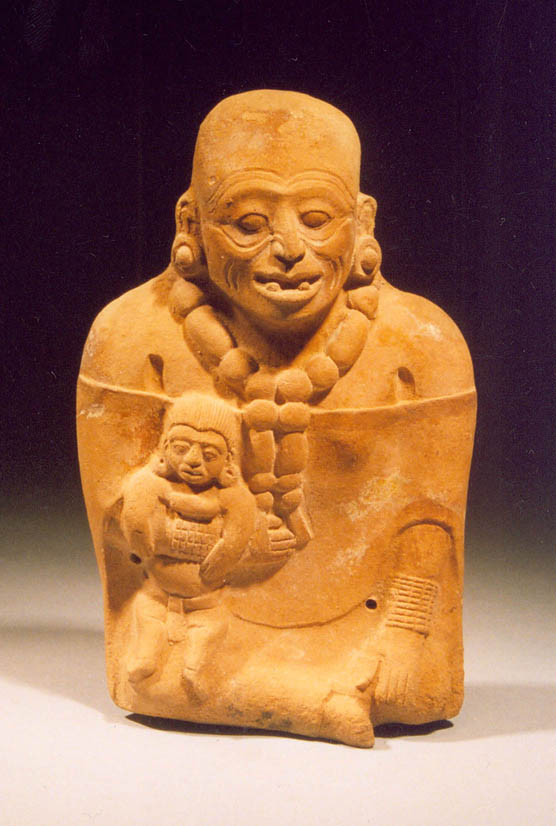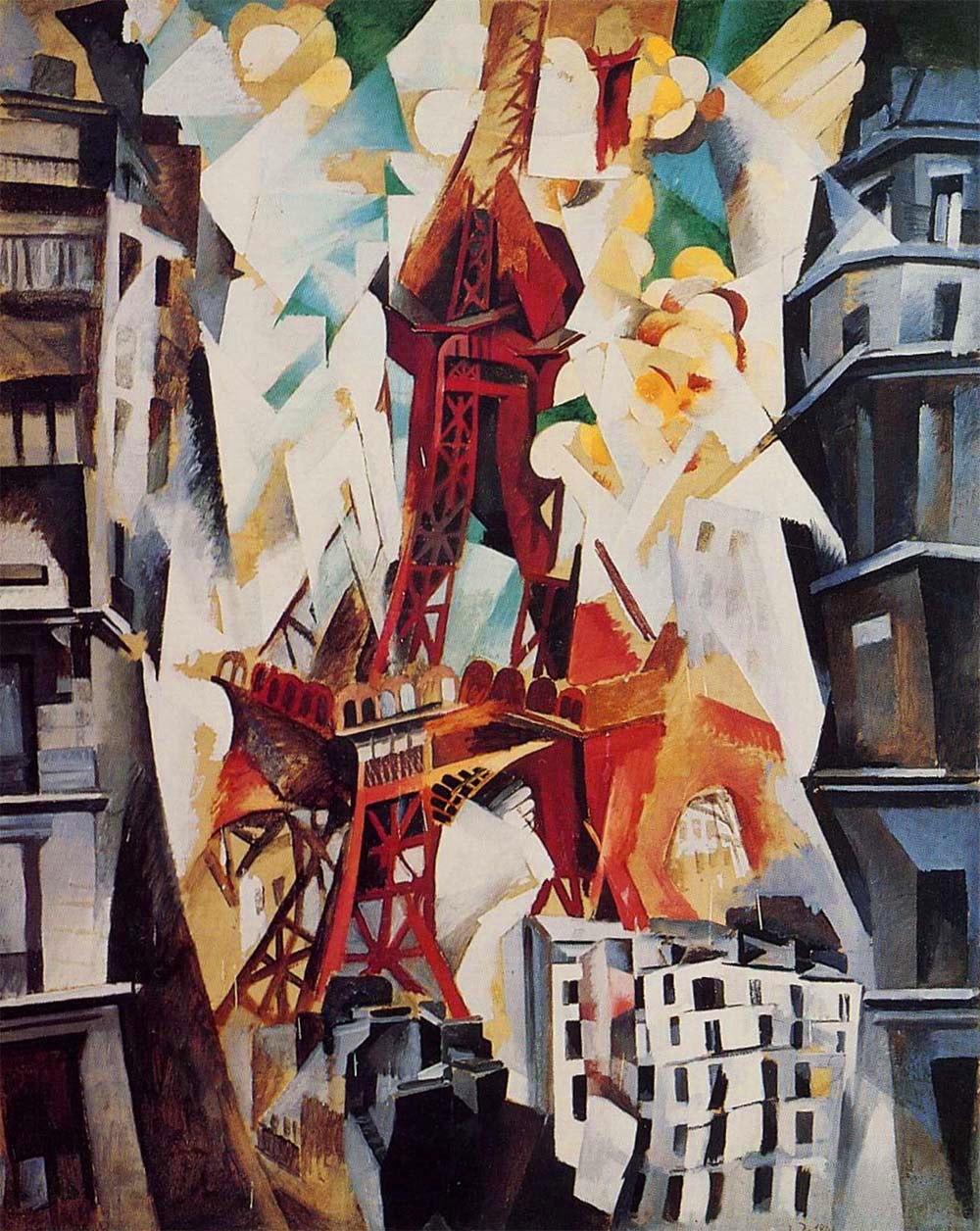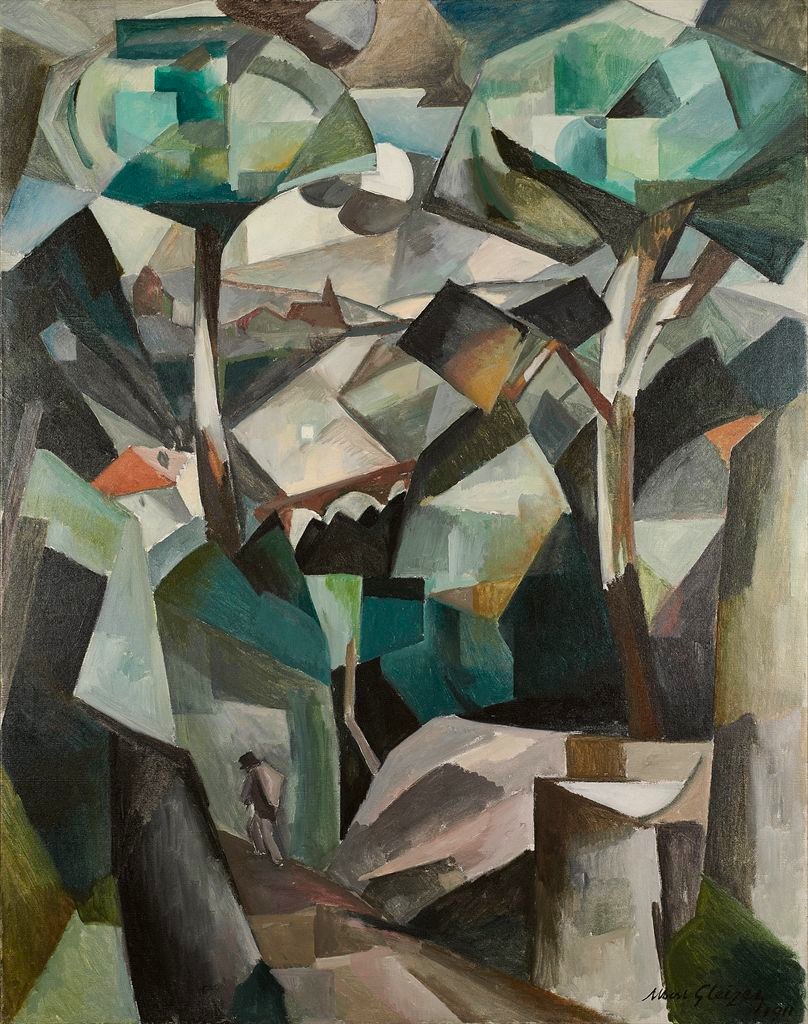|
Paysage Coloré Aux Oiseaux Aquatique
''Colored Landscape with Aquatic Birds'' (French: ''Paysage coloré aux oiseaux aquatiques'') is an oil painting created circa 1907 by the French artist and theorist Jean Metzinger. ''Paysage coloré aux oiseaux aquatiques'' is a Proto-Cubist work executed in a Post-Divisionist style with a unique Fauve-like palette. Metzinger's broad omnidirectional brushstrokes in the treatment of surfaces render homage to Paul Cézanne, while the luscious subtropical imagery in the painting are an homage to Paul Gauguin and Metzinger's friend Henri Rousseau. ''Paysage coloré aux oiseaux aquatiques'' is located at the Musée d’Art Moderne de la Ville de Paris. Description ''Paysage coloré aux oiseaux aquatiques'' is an oil painting on canvas in a horizontal format with dimensions 75.5 x 101 cm (29.7 by 39.8 in). The work represents three aquatic birds in an ambrosial Mediterranean landscape with semi-tropical vegetation, trees, a body of water, mountains and a sailboat in the ba ... [...More Info...] [...Related Items...] OR: [Wikipedia] [Google] [Baidu] |
Jean Metzinger
Jean Dominique Antony Metzinger (; 24 June 1883 – 3 November 1956) was a major 20th-century French painter, theorist, writer, critic and poet, who along with Albert Gleizes wrote the first theoretical work on Cubism. His earliest works, from 1900 to 1904, were influenced by the neo-Impressionism of Georges Seurat and Henri-Edmond Cross. Between 1904 and 1907 Metzinger worked in the Divisionist and Fauvist styles with a strong Paul Cézanne, Cézannian component, leading to some of the first Proto-Cubism, proto-Cubist works. From 1908 Metzinger experimented with the faceting of form, a style that would soon become known as Cubism. His early involvement in Cubism saw him both as an influential artist and an important theorist of the movement. The idea of moving around an object in order to see it from different view-points is treated, for the first time, in Metzinger's ''Note sur la Peinture'', published in 1910.Jean Metzinger, October–November 1910, "Note sur la peinture" Pan: ... [...More Info...] [...Related Items...] OR: [Wikipedia] [Google] [Baidu] |
Les Nabis
Les Nabis (French: les nabis, ) were a group of young French artists active in Paris from 1888 until 1900, who played a large part in the transition from impressionism and academic art to abstract art, symbolism and the other early movements of modernism. The members included Pierre Bonnard, Maurice Denis, Paul Ranson, Édouard Vuillard, Ker-Xavier Roussel, Félix Vallotton, Paul Sérusier and Auguste Cazalis. Most were students at the Académie Julian in Paris in the late 1880s. The artists shared a common admiration for Paul Gauguin and Paul Cézanne and a determination to renew the art of painting, but varied greatly in their individual styles. They believed that a work of art was not a depiction of nature, but a synthesis of metaphors and symbols created by the artist. In 1900, the artists held their final exhibition and went their separate ways.Bétard, Daphne, ''La révolution Nabie'', in ''Les Nabis et le décor'', Beaux-Arts Éditions, pp. 8-21 Etymology The Nabis took the ... [...More Info...] [...Related Items...] OR: [Wikipedia] [Google] [Baidu] |
Le Bonheur De Vivre
''Le bonheur de vivre'' (''The Joy of Life'') is a painting by Henri Matisse. Along with Picasso's ''Les Demoiselles d'Avignon'', ''Le bonheur de vivre'' is regarded as one of the pillars of early modernism. The monumental canvas was first exhibited at the Salon des Indépendants of 1906, where its cadmium colors and spatial distortions caused a public expression of protest and outrage. Description In the painting, nude women and men cavort, play music, and dance in a landscape drenched with vivid color. In the central background of the piece is a group of figures that is similar to the group depicted in his painting '' The Dance'' (1909–10). Inspiration Art historians James Cuno and Thomas Puttfarken have suggested that the inspiration for the work was Agostino Carracci's engraving of ''Reciproco Amore'' or ''Love in the Golden Age'' after the similarly named painting by the 16th-century Flemish painter Paolo Fiammingo. Based on the many similarities with the engraving, ... [...More Info...] [...Related Items...] OR: [Wikipedia] [Google] [Baidu] |
Baltimore Museum Of Art
The Baltimore Museum of Art (BMA) in Baltimore, Maryland, United States, is an art museum that was founded in 1914. The BMA's collection of 95,000 objects encompasses more than 1,000 works by Henri Matisse anchored by the Cone Collection of modern art, as well as one of the nation's finest holdings of prints, drawings, and photographs. The galleries currently showcase collections of art from Africa; works by established and emerging contemporary artists; European and American paintings, sculpture, and decorative arts; ancient Antioch mosaics; art from Asia, and textiles from around the world. The museum is distinguished by a neoclassical building designed in the 1920s by American architect John Russell Pope and two landscaped gardens with 20th-century sculpture. The museum is located between Charles Village, to the east, Remington, to the south, Hampden, to the west; and south of the Roland Park neighborhoods, immediately adjacent to the Homewood campus of Johns Hopkins U ... [...More Info...] [...Related Items...] OR: [Wikipedia] [Google] [Baidu] |
Museum Of Modern Art
The Museum of Modern Art (MoMA) is an art museum located in Midtown Manhattan, New York City, on 53rd Street between Fifth and Sixth Avenues. It plays a major role in developing and collecting modern art, and is often identified as one of the largest and most influential museums of modern art in the world. MoMA's collection offers an overview of modern and contemporary art, including works of architecture and design, drawing, painting, sculpture, photography, prints, illustrated and artist's books, film, and electronic media. The MoMA Library includes about 300,000 books and exhibition catalogs, more than 1,000 periodical titles, and more than 40,000 files of ephemera about individual artists and groups. The archives hold primary source material related to the history of modern and contemporary art. It attracted 1,160,686 visitors in 2021, an increase of 64% from 2020. It ranked 15th on the list of most visited art museums in the world in 2021.'' The Art Newspaper'' an ... [...More Info...] [...Related Items...] OR: [Wikipedia] [Google] [Baidu] |
Art Institute Of Chicago
The Art Institute of Chicago in Chicago's Grant Park, founded in 1879, is one of the oldest and largest art museums in the world. Recognized for its curatorial efforts and popularity among visitors, the museum hosts approximately 1.5 million people annually. Its collection, stewarded by 11 curatorial departments, is encyclopedic, and includes iconic works such as Georges Seurat's ''A Sunday on La Grande Jatte'', Pablo Picasso's ''The Old Guitarist'', Edward Hopper's '' Nighthawks'', and Grant Wood's '' American Gothic''. Its permanent collection of nearly 300,000 works of art is augmented by more than 30 special exhibitions mounted yearly that illuminate aspects of the collection and present cutting-edge curatorial and scientific research. As a research institution, the Art Institute also has a conservation and conservation science department, five conservation laboratories, and one of the largest art history and architecture libraries in the country—the Ryerson and B ... [...More Info...] [...Related Items...] OR: [Wikipedia] [Google] [Baidu] |
Fernand Léger
Joseph Fernand Henri Léger (; February 4, 1881 – August 17, 1955) was a French painting, painter, sculpture, sculptor, and film director, filmmaker. In his early works he created a personal form of cubism (known as "tubism") which he gradually modified into a more Figurative art, figurative, populism, populist style. His boldly simplified treatment of modern subject matter has caused him to be regarded as a forerunner of pop art. Biography Léger was born in Argentan, Orne, Lower Normandy, where his father raised cattle. Fernand Léger initially trained as an architect from 1897 to 1899, before moving in 1900 to Paris, where he supported himself as an architectural draftsman. After military service in Versailles, Yvelines, Versailles, Yvelines, in 1902–1903, he enrolled at the School of Decorative Arts after his application to the École des Beaux-Arts was rejected. He nevertheless attended the Beaux-Arts as a non-enrolled student, spending what he described as "three empty an ... [...More Info...] [...Related Items...] OR: [Wikipedia] [Google] [Baidu] |
Robert Delaunay
Robert Delaunay (12 April 1885 – 25 October 1941) was a French artist who, with his wife Sonia Delaunay and others, co-founded the Orphism art movement, noted for its use of strong colours and geometric shapes. His later works were more abstract. His key influence related to bold use of colour and a clear love of experimentation with both depth and tone. Overview Delaunay is most closely identified with Orphism. From 1912 to 1914, he painted nonfigurative paintings based on the optical characteristics of brilliant colors that were so dynamic they would function as the form. His theories are mostly concerned with color and light and influenced many, including Stanton Macdonald-Wright, Morgan Russell, Patrick Henry Bruce, Der Blaue Reiter, August Macke, Franz Marc, Paul Klee, and Lyonel Feininger. Art Critic Guillaume Apollinaire was strongly influenced by Delaunay's theories of color and often quoted from them to explain Orphism, which he had named. Delaunay's fixations w ... [...More Info...] [...Related Items...] OR: [Wikipedia] [Google] [Baidu] |
Henri Le Fauconnier
Henri Victor Gabriel Le Fauconnier (July 5, 1881 – December 25, 1946) was a French Cubist painter born in Hesdin. Le Fauconnier was seen as one of the leading figures among the Montparnasse Cubists. At the 1911 Salon des Indépendants Le Fauconnier and colleagues Jean Metzinger, Albert Gleizes, Fernand Léger and Robert Delaunay caused a scandal with their Cubist paintings. He was in contacts with many European avant-garde artists such as Wassily Kandinsky, writing a theoretical text for the catalogue of the Neue Künstlervereinigung München, Neue Künstlervereinigung in Munich, of which he became a member. His paintings were exhibited in Moscow reproduced as examples of the latest art in ''Der Blaue Reiter, Der Blaue Reiter Almanach'' (''The Blue Rider Almanac''). Career In 1901 Henri Le Fauconnier moved from northern France to Paris, where he studied law, then attended painting classes in the studio of Jean-Paul Laurens, then in the Academie Julian. He changed his name from ... [...More Info...] [...Related Items...] OR: [Wikipedia] [Google] [Baidu] |
Albert Gleizes
Albert Gleizes (; 8 December 1881 – 23 June 1953) was a French artist, theoretician, philosopher, a self-proclaimed founder of Cubism and an influence on the School of Paris. Albert Gleizes and Jean Metzinger wrote the first major treatise on Cubism, ''Du "Cubisme"'', 1912. Gleizes was a founding member of the Section d'Or group of artists. He was also a member of ''Der Sturm'', and his many theoretical writings were originally most appreciated in Germany, where especially at the Bauhaus his ideas were given thoughtful consideration. Gleizes spent four crucial years in New York, and played an important role in making America aware of modern art. He was a member of the Society of Independent Artists, founder of the Ernest-Renan Association, and both a founder and participant in the Abbaye de Créteil. Gleizes exhibited regularly at Léonce Rosenberg's ''Galerie de l’Effort Moderne'' in Paris; he was also a founder, organizer and director of Abstraction-Création. From the mid-1 ... [...More Info...] [...Related Items...] OR: [Wikipedia] [Google] [Baidu] |
Georges Braque
Georges Braque ( , ; 13 May 1882 – 31 August 1963) was a major 20th-century List of French artists, French painter, Collage, collagist, Drawing, draughtsman, printmaker and sculpture, sculptor. His most notable contributions were in his alliance with Fauvism from 1905, and the role he played in the development of Cubism. Braque's work between 1908 and 1912 is closely associated with that of his colleague Pablo Picasso. Their respective Cubist works were indistinguishable for many years, yet the quiet nature of Braque was partially eclipsed by the fame and notoriety of Picasso. Early life Georges Braque was born on 13 May 1882 in Argenteuil, Val-d'Oise. He grew up in Le Havre and trained to be a house painter and interior decorator, decorator like his father and grandfather. However, he also studied artistic painting during evenings at the École supérieure d'art et design Le Havre-Rouen, previously known as the École supérieure des Arts in Le Havre, from about 1897 to 189 ... [...More Info...] [...Related Items...] OR: [Wikipedia] [Google] [Baidu] |




